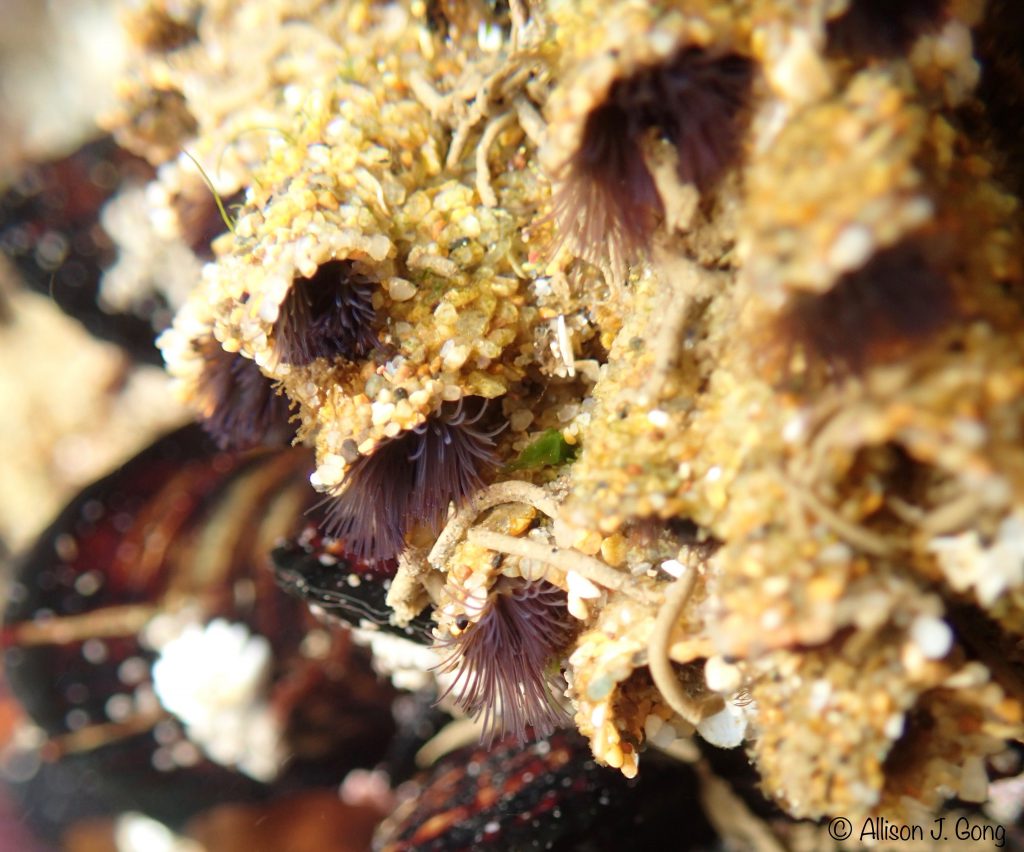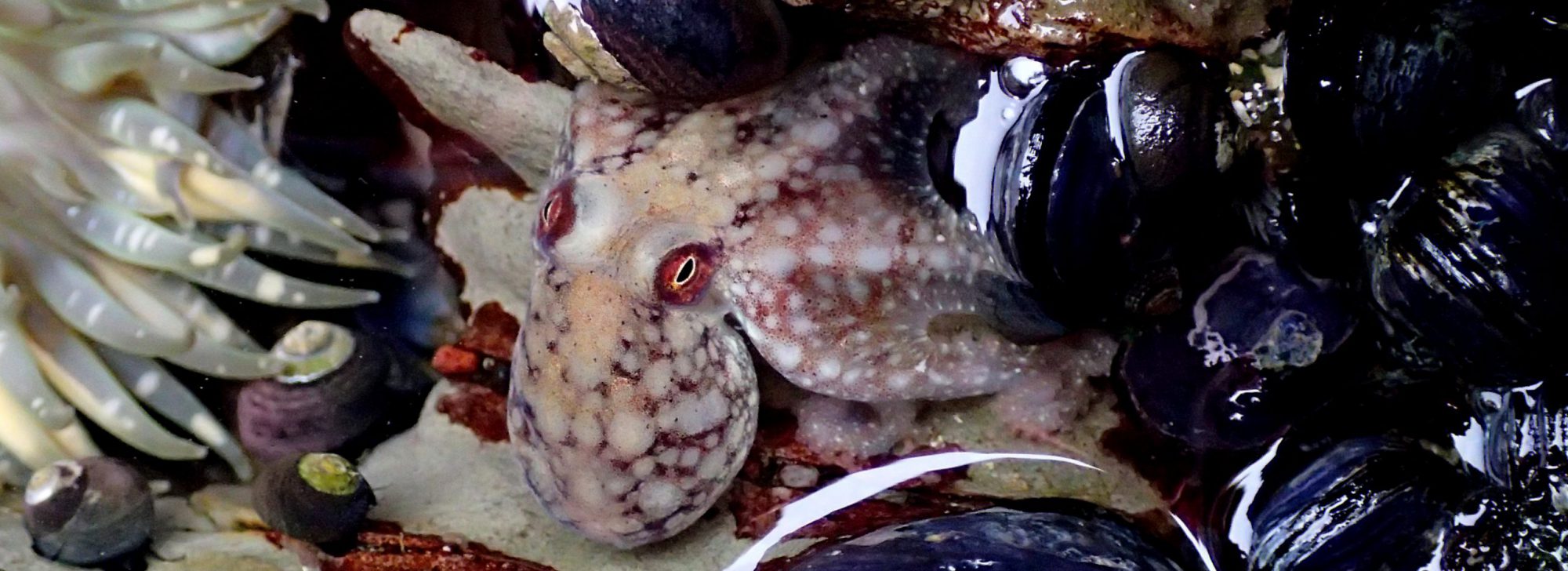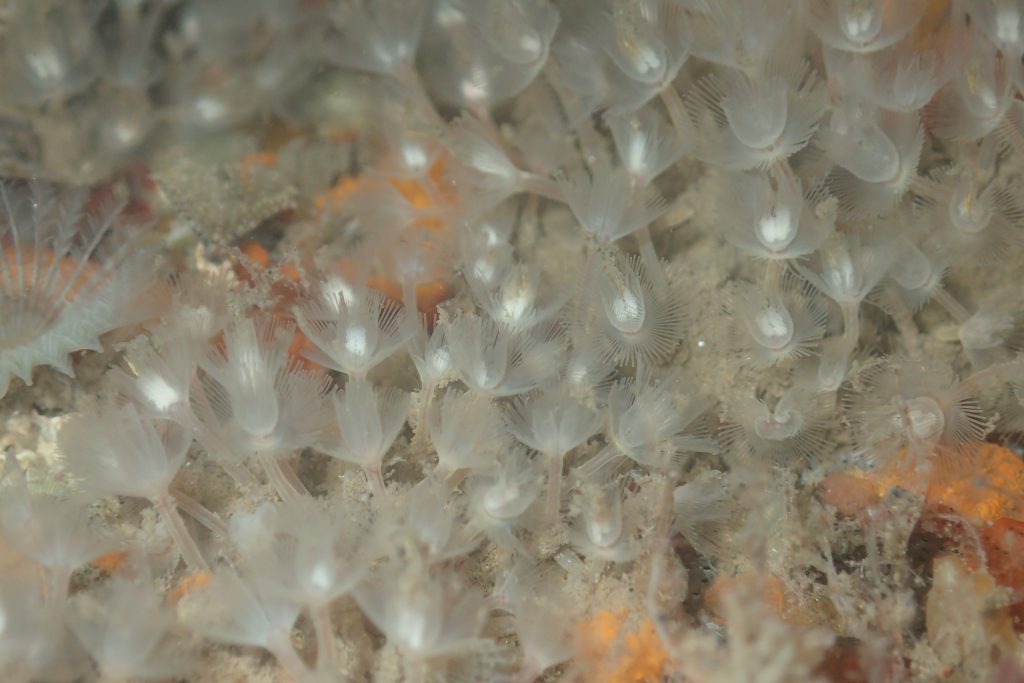If I asked you to draw a worm and designate the front and back ends, you’d most likely come up with something that looks like this:
And you would be entirely correct. A worm, or any creature described as ‘vermiform’ for that matter, has an elongated, wormlike body. Some worms have actual heads with eyes and sensory tentacles, but many don’t. The great many polychaete worms that live in tubes don’t have much of a head at all: usually all you can see sticking out of the tube is a crown of tentacles used for feeding. Although even the use of the word ‘crown’ more than suggests the presence of a head, doesn’t it? After all, where else does one wear a crown?

26 May 2016
© Allison J. Gong
Most worms, including the worm that we imagined above, are bilaterally symmetrical, with bodies elongated along the Anterior-Posterior axis. This means the head is at the anterior end and the rear is the posterior end. For animals that don’t have a prominent head, the Anterior can also be defined by the direction of locomotion. Worms crawl with their bellies against the ground, which sets up a second axis of symmetry, the Dorsal-Ventral axis. The third axis of symmetry is the Left-Right axis. These axes should sound familiar, because they apply to our own bodies, as well of those of all other vertebrates and many invertebrates. Because of our upright stance we actually walk with our ventral surface forward, which is a little confusing, but if you don’t trust me you can see for yourself by crawling around on hands and knees for a while.
Now back to our worms, hypothetical and otherwise. Consider a worm that is elongated not along its Anterior-Posterior axis, but along its Dorsal-Ventral axis. It sounds strange, but such worms do exist. They are called phoronid worms, and are classified within their own phylum, the Phoronida. They all live in tubes, and the few times I’ve seen them they have been in pretty dense aggregations. As with most tube-dwelling worms the only part of the body that you can usually see is the crown of feeding tentacles, which in these animals (as well as in the Bryozoa and Brachiopoda) is called a lophophore.
The other day I was at the harbor looking for slugs with my friend Brenna, and spotted these pale tentacles swaying in the current.
These are the lophophores of an aggregation of phoronids! I’d never seen them at the harbor before, so I was pretty excited about it. They were on the side of a floating walkway, down almost beyond the reach of my outstretched arm. The current caused the lophophores to sway continuously and I was barely able to snap some blurry photos without falling in (I couldn’t really see what I was doing and just hoped for the best) when I accidentally caught this one shot. I wanted to have at least one clear-ish shot to submit to iNaturalist. I did manage to scrape off some bits of stuff that I hoped contained intact phoronids, so I could observe them under the dissecting scope at the lab.
And these are some lovely little worms!
The tubes that these phoronids inhabit are more like burrows of slime to which the surrounding sediments adhere. The tube itself isn’t anything particularly interesting, but the bodies of the worms are beautifully transparent. One of the coolest things you can see in a living phoronid is its circulatory system. They have red blood that, like ours, contains hemoglobin, so it’s easy to see the vessels that run along the length of the worm (which is the Dorsal-Ventral axis, remember) and the two blood rings around the base of the lophophore. If you get the lighting right you can even see the vessels that extend into each tentacle of the lophophore.
I was disappointed to see that none of the video clips I took really do justice to these worms. They are so pretty when I look at them through the microscope, and I wish I could capture their beauty. You may at least be able to see blood moving through the larger vessels of the body in this short video.
Seems I need to upgrade my photomicroscopy set-up. Anybody have a few thousand bucks they want to donate to the cause?
I’m keeping the phoronids for as long as I can, although I don’t know what to feed them. I had time to take just a quick look at them this morning, and they look fine. Just for kicks I offered them a little phytoplankton to see what they’d do with it and couldn’t see if they were reacting at all. Still, they are filter feeders, and if I can adjust the lighting and get a good view of those ciliated tentacles I should be able to see if they are creating a water current that is bringing food to the mouth. Friday is the next day I have time to spend with these animals that I don’t get to see very often. Maybe then I’ll have something else to report.




1 thought on “A different take on ‘vermiform’”